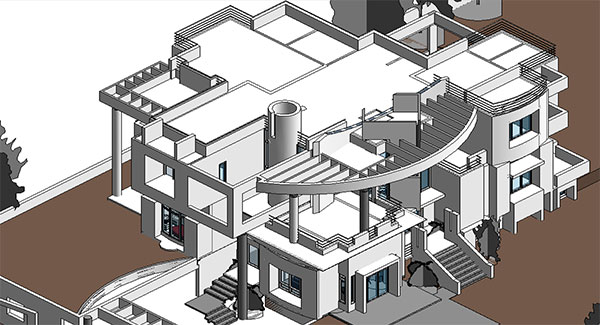 Dr. Manish Dixit, an assistant professor of industrial technology in Sam Houston State University’s Department of Agricultural and Industrial Sciences, was recently named the lead participant for the United States in Annex 57 of the International Energy Agency’s Energy Conservation in Buildings and Community Systems Program.
Dr. Manish Dixit, an assistant professor of industrial technology in Sam Houston State University’s Department of Agricultural and Industrial Sciences, was recently named the lead participant for the United States in Annex 57 of the International Energy Agency’s Energy Conservation in Buildings and Community Systems Program.
Dr. Dixit’s expertise is in the field of embodied energy and carbon computation, and has published on this topic in peer-reviewed journals and conference proceedings. As the nation’s chosen Annex 57 participant, he will contribute to the establishment of a standard embodied energy and carbon calculation method, an embodied energy and carbon database for construction materials, and a set of measures to reduce the life cycle energy consumption of buildings. The U.S. Department of Energy, the agency that approves an individual as the national participant, recently approved Dr. Dixit as an expert in the field and the national participant to represent the United States. He will receive funding to attend all Annex 57 experts meetings and to undertake the part of the Annex Work Plan for which he is designated as a participant.
Annex 57 is an international project focused on the Evaluation of Embodied Energy and Carbon Dioxide Emissions for Building Construction. The main goal of the project is to provide a standardized method to calculate and analyze the energy and carbon embodied in building construction. This research is one of the key steps towards achieving near-zero energy and carbon neutral buildings. There are 28 participants from various countries around the globe. Annex 57 experts meet twice a year, with the next meeting planned for Barcelona, Spain.
 “Embodied energy” is the total energy consumed in manufacturing and delivering a product such as a washing machine, toothpaste, a brick, or a package of potato chips. All consumer products have already consumed a significant amount of energy when they reach a retail store. Dr. Dixit explains: “For instance, to manufacture a washing machine, quantities of metal, plastic, and rubber are required—each of which have some embodied energy associated with them. Therefore, the total energy embodied in the washing machine must include the energy of manufacturing the machine, as well as the total embodied energy of its constituent materials. All related transportation must also be included in the calculation of total energy. Manufacturing plants also utilize human energy (labor), which needs to be accounted for as well.”
“Embodied energy” is the total energy consumed in manufacturing and delivering a product such as a washing machine, toothpaste, a brick, or a package of potato chips. All consumer products have already consumed a significant amount of energy when they reach a retail store. Dr. Dixit explains: “For instance, to manufacture a washing machine, quantities of metal, plastic, and rubber are required—each of which have some embodied energy associated with them. Therefore, the total energy embodied in the washing machine must include the energy of manufacturing the machine, as well as the total embodied energy of its constituent materials. All related transportation must also be included in the calculation of total energy. Manufacturing plants also utilize human energy (labor), which needs to be accounted for as well.”
This calculation of embodied energy is important in promoting resource efficiency and sustainable lifestyles. “When we consume anything, we deplete energy and contribute to carbon emission and pollution,” Dr. Dixit points out. “We do not know how much energy is embodied in things we waste routinely, such as food items, disposable plates and spoons, aluminum foil, plastic wraps, water bottles, and so on. Even the food we eat is quite energy-intensive.”
In some parts of the world, according to Dr. Dixit, the concept of environmental labeling has already begun to emerge. In these areas, each consumer item is required to have an environmental label, similar to the labels on food items that contain ingredients and calorie levels, that lists the amount of energy and carbon the product has incurred during its production. The concept of embodied energy encapsulates the total energy and environmental impacts of consumption.
 This concept is also very relevant to the construction industry, which generates significant amount of construction and demolition waste each year. The process of embodied energy optimization includes selecting building materials and products that are durable and require low maintenance and replacement. Also, using locally available products not only boosts the local economy, but also reduces the transportation energy and eventually the total embodied energy.
This concept is also very relevant to the construction industry, which generates significant amount of construction and demolition waste each year. The process of embodied energy optimization includes selecting building materials and products that are durable and require low maintenance and replacement. Also, using locally available products not only boosts the local economy, but also reduces the transportation energy and eventually the total embodied energy.
The College of Sciences and Sam Houston State University are proud of Dr. Dixit’s selection as a participant in this important worldwide research initiative (which is scheduled to be completed in June 2015), and of the expertise that he will bring to Annex 57’s efforts in pursuit of its goal of evaluating embodied energy and carbon dioxide emissions. His participation will also hopefully provide opportunities for international collaboration to obtain international research grants in the field.
(Above right and left: Two building designs created by Dr. Dixit in his architectural design practice)
